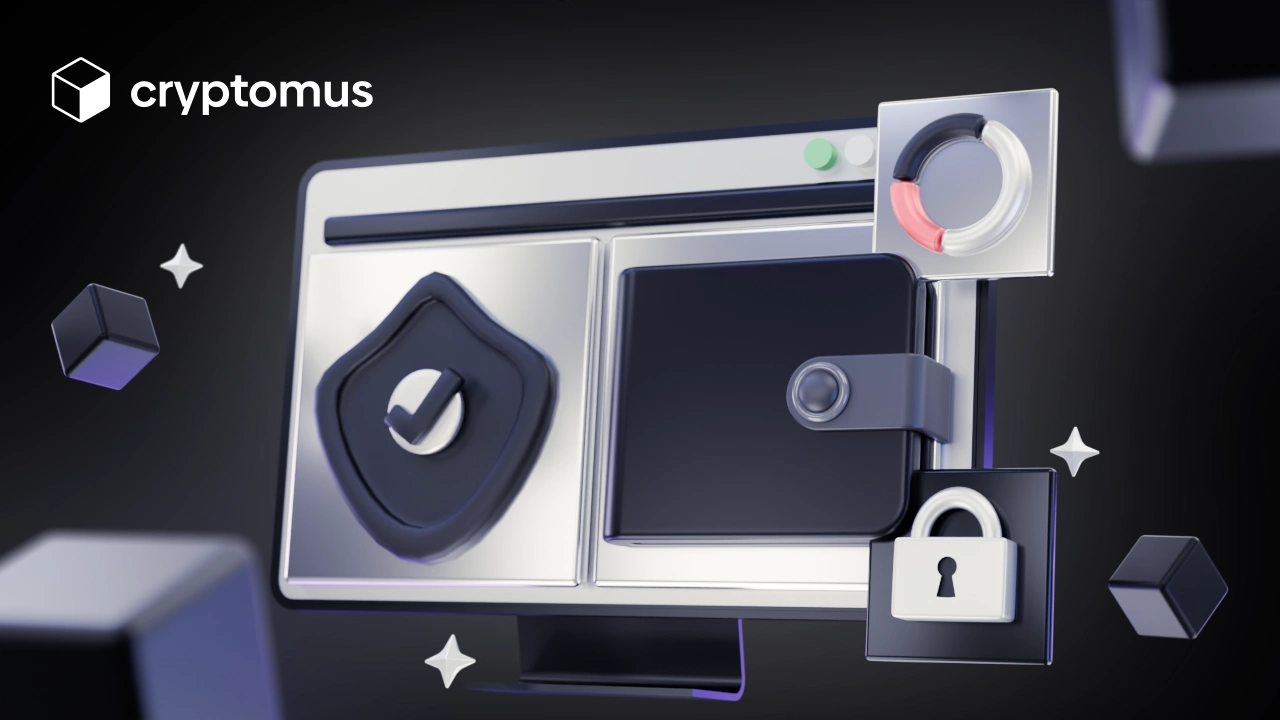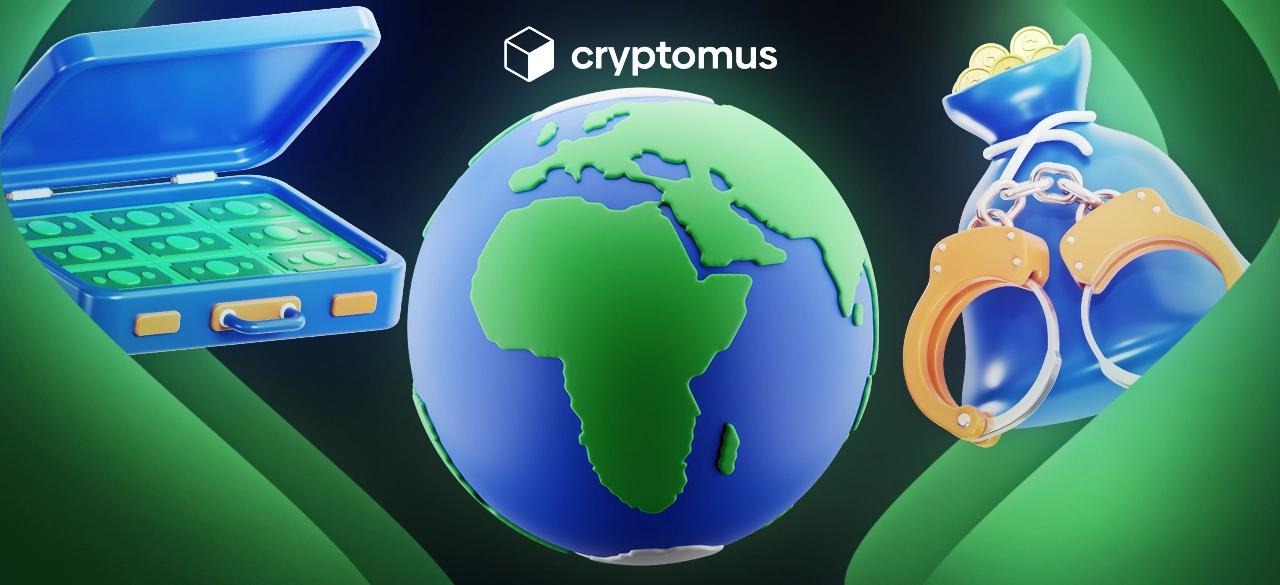
Jak zabezpieczyć swój portfel kryptowalutowy
Bezpieczne przechowywanie i zarządzanie aktywami cyfrowymi opiera się na portfelu kryptowalutowym oraz Twojej odpowiedzialności. Zapewnienie jego ochrony nie jest opcją, ale jest kluczowe.
Niniejszy przewodnik pomoże w zabezpieczeniu Twojego portfela kryptowalutowego. Wyjaśnimy dostępne funkcje bezpieczeństwa oraz przedstawimy najlepsze praktyki chroniące Twoje aktywa.
Kluczowe funkcje bezpieczeństwa portfeli kryptowalutowych
Zanim zabezpieczysz swój portfel kryptowalutowy, musisz zrozumieć jego podstawowe elementy bezpieczeństwa. Portfele można klasyfikować jako gorące, które są podłączone do sieci, lub zimne, które są offline. Niezależnie od tego, co wybierzesz, upewnij się, że zawiera następujące funkcje zabezpieczeń, aby chronić swoje fundusze:
Klucze prywatne
Klucz prywatny to unikalny kod, który umożliwia dostęp do Twoich aktywów kryptograficznych. Jest to prawdopodobnie najważniejszy aspekt bezpieczeństwa portfela, ponieważ jego utrata oznacza całkowitą utratę dostępu do Twoich aktywów.
Chociaż wiele portfeli oferuje szyfrowanie kluczy prywatnych lub sposób zabezpieczenia ich przechowywania, kluczowe jest zrozumienie, jakie zabezpieczenia są wprowadzone. Portfele oferujące metodę zimnego przechowywania kluczy prywatnych są bardziej bezpieczne, ponieważ zmniejszają podatność na ataki internetowe lub hakerskie.
Opcje kopii zapasowej i przywracania
Większość niezawodnych portfeli jest wyposażona w funkcje kopii zapasowej i przywracania, co pozwala Ci ponownie uzyskać dostęp do swoich funduszy w przypadku utraty lub uszkodzenia urządzenia. Te portfele często używają zwrotów nasiennych, które składają się z 12 do 24 losowych słów. Ważne jest, aby przechowywać je offline, ponieważ każda osoba, która je posiada, może łatwo przywrócić Twój portfel. Aby dodatkowo zminimalizować ryzyko, niektórzy użytkownicy decydują się na podział swoich zwrotów nasiennych i przechowują segmenty w oddzielnych, bezpiecznych miejscach.
Szyfrowanie
Szyfrując dane do formatu zabezpieczonego, tylko osoby posiadające odpowiedni klucz deszyfrujący mogą uzyskać do nich dostęp. Portfele, które wprowadzają szyfrowanie zarówno dla kluczy prywatnych, jak i kanałów komunikacyjnych, skutecznie chronią Twoje informacje przed przechwyceniem przez hakerów.
Dwustopniowa autoryzacja
2FA zapewnia dodatkową warstwę zabezpieczeń, wymagając drugiej formy weryfikacji podczas logowania lub dokonywania transakcji. Większość portfeli oferuje opcje 2FA za pośrednictwem aplikacji takich jak Google Authenticator lub przez wysyłanie kodów SMS, zapewniając większą ochronę, nawet jeśli Twoje hasło zostanie skompromitowane.
Autoryzacja wielopodpisowa
Niektóre portfele kryptowalutowe wprowadzają autoryzację wielopodpisową, co wymaga, aby wiele kluczy prywatnych od różnych użytkowników zatwierdzało transakcje. To podejście jest szczególnie cenne dla firm lub użytkowników szukających zwiększonego bezpieczeństwa, ponieważ gwarantuje, że transakcja nie może być autoryzowana przez jedno skompromitowane konto.
Biała lista adresów
Wiele portfeli zapewnia opcję białej listy adresów, która ogranicza przelewy środków wyłącznie do wstępnie zatwierdzonych adresów. Zapewnia to ochronę przed nieautoryzowanymi transakcjami, zwłaszcza jeśli Twoje konto zostanie naruszone.

Najlepsze praktyki zabezpieczania Twojego portfela kryptowalutowego
Teraz, gdy przeszedłeś przez istotne funkcje bezpieczeństwa, przejdźmy do najlepszych praktyk bezpieczeństwa. Możesz chronić swój portfel kryptowalutowy, korzystając z niezawodnych dostawców portfeli, stosując silne hasła i 2FA, regularnie aktualizując oprogramowanie oraz zachowując ostrożność w przypadku oszustw hakerskich i phishingowych. Przyjrzyjmy się każdej praktyce osobno:
Wybierz niezawodnego dostawcę portfela kryptowalutowego
Aby skutecznie chronić swoje aktywa cyfrowe, zacznij od wyboru portfela, który oferuje odpowiednie połączenie bezpieczeństwa i łatwości użytkowania. Opcje sprzętowe są bardzo znane z wysokiego poziomu bezpieczeństwa i dlatego zaleca się je do długoterminowego przechowywania lub trzymania dużych ilości monet.
Jednak nie są one tak wygodne do częstego użytkowania, a istnieją portfele programowe, które zapewniają solidne środki ochrony i są znacznie bardziej odpowiednie do częstego handlu. Cryptomus jest jednym z najlepszych portfeli, który obejmuje wszystkie omawiane funkcje bezpieczeństwa. Ponadto zawsze badaj reputację dostawcy portfela, aby upewnić się, że odpowiada Twoim standardom.
Używaj silnych haseł
Silne hasło jest Twoją podstawową barierą przeciwko nieautoryzowanemu dostępowi. Staraj się tworzyć długie i złożone kombinacje wielkich i małych liter, cyfr i symboli specjalnych. Unikaj używania łatwo przewidywalnych informacji, takich jak Twoje imię, data urodzenia lub inne powszechnie używane terminy.
Menedżer haseł może uprościć Twoje bezpieczeństwo w sieci, przechowując wszystkie Twoje hasła w bezpiecznym miejscu. Może również generować unikalne hasła dla każdej usługi, z której korzystasz, w tym portfela. Uważaj, aby nie używać tego samego hasła dla wielu kont; kompromitacja jednego konta może narazić wszystkie inne na potencjalne zagrożenia.
Przechowuj wrażliwe informacje offline
To poważny błąd przechowywać swoje hasła, klucze prywatne lub zwroty nasienne online lub w łatwo dostępnych formatach, takich jak przechowywanie w chmurze lub niezaszyfrowane pliki. Jeśli haker uzyska dostęp do Twojego urządzenia lub usługi chmurowej, mógłby przejąć te wrażliwe informacje, co prowadziłoby do kompromitacji Twojego portfela.
Aby chronić te informacje, zapisz je i przechowuj w bezpiecznym fizycznym miejscu. Inną opcją jest korzystanie z rozwiązań do przechowywania offline, takich jak dyski USB, aby zredukować ryzyko złośliwego oprogramowania lub zewnętrznych ataków na Twoje dane.
Aktywuj 2FA
Jak już wcześniej wspomniano, 2FA zwiększa bezpieczeństwo, wymagając dodatkowej formy identyfikacji, zazwyczaj kodu wysyłanego na Twój smartfon lub generowanego przez aplikację. To skutecznie utrudnia hakerom dostęp do Twojego portfela, nawet jeśli uzyskają dostęp do Twojego hasła. Zawsze aktywuj tę funkcję, jeśli usługa portfela ją oferuje.
Aby zwiększyć swoje bezpieczeństwo, unikaj opartej na SMS dwustopniowej autoryzacji, ponieważ może być ona podatna na ataki, takie jak wymiana karty SIM. Zamiast tego skorzystaj z aplikacji do 2FA dla silniejszej ochrony.
Bądź na bieżąco z zagrożeniami w zakresie cyberbezpieczeństwa
W miarę jak cyberprzestępcy doskonalą swoje techniki, tworzą nowe metody kradzieży kryptowalut. Częste zagrożenia obejmują oszustwa phishingowe, złośliwe oprogramowanie i ataki inżynierii społecznej. Wiele prób phishingowych naśladuje autentyczne e-maile lub wiadomości od dostawców portfeli lub giełd, zachęcając użytkowników do dzielenia się swoimi prywatnymi informacjami.
Aby się przed nimi bronić, monitoruj najnowsze problemy związane z bezpieczeństwem i trendy przestępcze. Bądź sceptyczny wobec niezamówionych wiadomości proszących o Twoje klucze prywatne lub dane logowania, i powstrzymuj się od interakcji z podejrzanymi linkami.
Unikaj stawania się celem
Publiczne dzielenie się szczegółami na temat swoich inwestycji w kryptowaluty, szczególnie w mediach społecznościowych, może narażać Cię na potencjalne zagrożenia cybernetyczne. Hakerzy często szukają osób, które dumnie dzielą się swoim bogactwem, czyniąc je głównymi celami prób phishingowych lub innych oszukańczych strategii mających na celu kradzież funduszy.
Zachowanie niskiego profilu na temat swoich inwestycji jest rozsądne. Jeśli zdecydujesz się omówić swoje portfolio online, rób to ostrożnie i unikaj dzielenia się szczegółowymi informacjami, które mogą ujawnić wielkość Twoich aktywów lub ich lokalizację.
Weryfikuj witryny i źródła
Witryny phishingowe naśladują autentyczne strony, aby oszukać użytkowników, a przypadkowe odwiedzenie jednej z nich może skutkować kradzieżą Twoich kluczy prywatnych. Zawsze sprawdzaj URL pod kątem drobnych literówek lub dziwnych znaków, ponieważ mogą to być znaki ostrzegawcze prób phishingowych. Upewnij się, że strona używa HTTPS do bezpiecznej komunikacji, a także rozważ dodanie do zakładek oficjalnych stron swojego portfela lub giełdy, aby zminimalizować ryzyko.
Regularnie aktualizuj swoje oprogramowanie
Aktualizacje oprogramowania są regularnie dostarczane przez programistów, aby załatać luki w zabezpieczeniach, poprawić środki ochrony i zwiększyć wydajność. Niedopełnienie aktualizacji portfela lub urządzenia może narażać Cię na problemy z bezpieczeństwem, które hakerzy mogą wykorzystać.
Upewnij się, że automatyczne aktualizacje są włączone dla Twojego portfela i urządzeń, gdy tylko to możliwe. Jeśli ta opcja nie jest dostępna, zobowiąż się do regularnego sprawdzania aktualizacji. Zasada ta powinna dotyczyć także wszelkich programów antywirusowych lub ochrony przed złośliwym oprogramowaniem, które masz na swoich urządzeniach.
Monitoruj aktywność swojego portfela
Bardzo ważne jest, aby regularnie sprawdzać swój portfel pod kątem jakichkolwiek nieautoryzowanych transakcji, aby zwiększyć swoje bezpieczeństwo. Ustaw powiadomienia o transakcjach lub alerty e-mailowe, aby być natychmiast informowanym o wszelkiej nieprawidłowej aktywności. Jeśli zauważysz coś podejrzanego, szybko przetransferuj swoje fundusze do innego portfela, sprawdź swoje ustawienia zabezpieczeń i skontaktuj się z zespołem wsparcia klientów.
Wdrażając te praktyki i korzystając z funkcji zabezpieczeń, które masz do dyspozycji, możesz znacznie zminimalizować ryzyko związane z przechowywaniem aktywów cyfrowych. Pamiętaj, że bezpieczeństwo Twojego portfela kryptowalutowego leży w Twoich rękach, a zachowanie czujności pomoże chronić Twoje aktywa przed potencjalnymi zagrożeniami.
Mamy nadzieję, że nasz przewodnik był pomocny. Prześlij swoje sugestie i pytania poniżej!
Oceń artykuł








uwagi
0
Aby dodać komentarz, musisz się zalogować